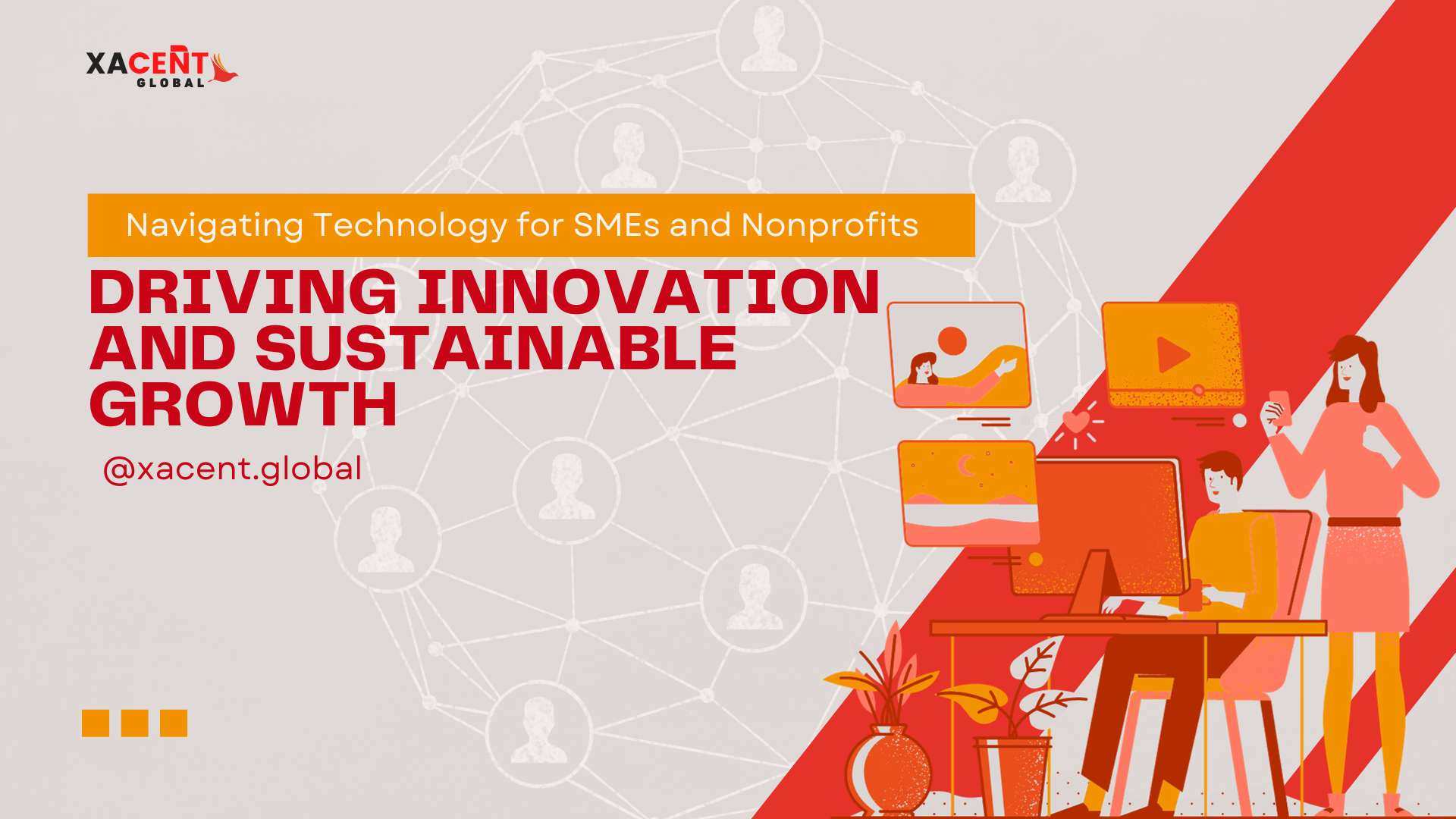
Introduction
In the rapidly evolving digital landscape, technology has become an indispensable tool for businesses of all sizes, including Small and Medium-sized Enterprises (SMEs) and nonprofits. Although larger corporations may have greater resources to invest in innovative technologies, SMEs and nonprofits can also capitalize on a balanced approach to drive innovation and achieve long-term growth. Today, we will explore how SMEs and nonprofits can leverage both established and emerging technologies to their advantage and provide some practical tips to help them succeed in their technological journey.
Embrace Established Technologies
For SMEs and nonprofits, embracing established technologies can provide a solid foundation for operational efficiency and productivity. Cloud computing, for instance, has revolutionized the way organizations store and manage data, enabling flexible access and reducing the burden of costly on-premises infrastructure. Adopting Software-as-a-Service (SaaS) solutions for common tasks like customer relationship management, accounting, and project management can help these organizations streamline processes, allowing them to focus on their core mission.
Moreover, the importance of a strong online presence cannot be overstated. Websites and social media platforms provide an affordable and effective way for SMEs and nonprofits to reach a broader audience and engage with their stakeholders. By investing in user-friendly websites and using social media to share their stories, these organizations can build stronger relationships with customers, donors, and volunteers.
Unlocking the Power of Data
Data is an invaluable asset that can be used to inform strategic decision-making. SMEs and nonprofits can harness data analytics tools to gain a better understanding of their operations, customer behaviour, and donor preferences. By leveraging this knowledge, they can identify trends, discover opportunities for improvement, and tailor their services to meet the evolving needs of their target audience.
Additionally, customer relationship management (CRM) software can be a game-changer for SMEs and nonprofits. It helps centralize customer interactions and provides a comprehensive view of the organization’s relationships with its stakeholders. This, in turn, enables personalized communication and more effective fundraising efforts.
Adopting Emerging Technologies
While established technologies are critical, embracing emerging technologies is equally important for SMEs and nonprofits to stay ahead of the curve and foster innovation. Artificial Intelligence (AI) and Machine Learning (ML) applications can help automate repetitive tasks, enhance customer experiences, and optimize resource allocation. For example, chatbots can be used to manage customer inquiries, freeing up human resources for more complex tasks.
The Internet of Things (IoT) is yet another promising technology that may benefit both SMEs and nonprofits. Organisations may obtain real-time data, increase operational efficiency, and cut resource waste by linking devices and sensors. IoT may play a critical role in monitoring and safeguarding sensitive ecosystems for entities working in areas such as environmental protection.
Cybersecurity Considerations
As SMEs and nonprofits embrace technology, it’s essential to prioritize cybersecurity. While larger enterprises might attract more attention from cybercriminals, smaller organizations are not immune to cyber threats. Investing in robust security measures and employee training is crucial to protect sensitive data and keeping the trust of customers, donors and stakeholders.
Practical Tips for Success
1. Start with a Clear Vision: Before adopting any technology, SMEs and nonprofits should have a clear understanding of their goals and how technology can help achieve them. Align technology investments with the organization’s mission and long-term strategy.
2. Prioritize User Experience: When implementing new technologies, focus on user experience. Intuitive interfaces and user-friendly solutions can enhance productivity and reduce the learning curve for employees and stakeholders.
3. Foster a Culture of Innovation: Encourage employees to be open to new ideas and embrace a culture of continuous learning. Providing opportunities for training and upskilling can empower the workforce to explore and apply emerging technologies.
4. Partner with Technology Experts: SMEs and nonprofits may lack in-house IT expertise, making it beneficial to collaborate with technology partners or consultants. These experts can offer valuable insights and guidance throughout the technological journey.
5. Test and Iterate: When adopting new technologies, start with small-scale implementations and pilot projects. Evaluate the results and gather feedback to make informed decisions before scaling up.
6. Stay Compliant: Be aware of data protection and privacy regulations relevant to your region and industry. Ensure compliance with these regulations to avoid potential legal issues and maintain stakeholder trust.
Conclusion
In conclusion, both established and emerging technology present opportunities for SMEs and nonprofits to drive innovation and achieve long-term growth. By embracing established technologies such as cloud computing and data analytics, organizations can improve efficiency and optimize customer relationships. Additionally, adopting emerging technologies like AI, ML, and IoT can lead to innovative solutions and a competitive edge in the market.
To succeed in this technological journey, SMEs and nonprofits should remain adaptable, prioritize user experience, and foster a culture of innovation. By seeking guidance from technology experts and adhering to best practices in cybersecurity and data protection, these organizations can confidently navigate the digital landscape and unlock the true potential of technology for sustainable growth and positive social impact.
